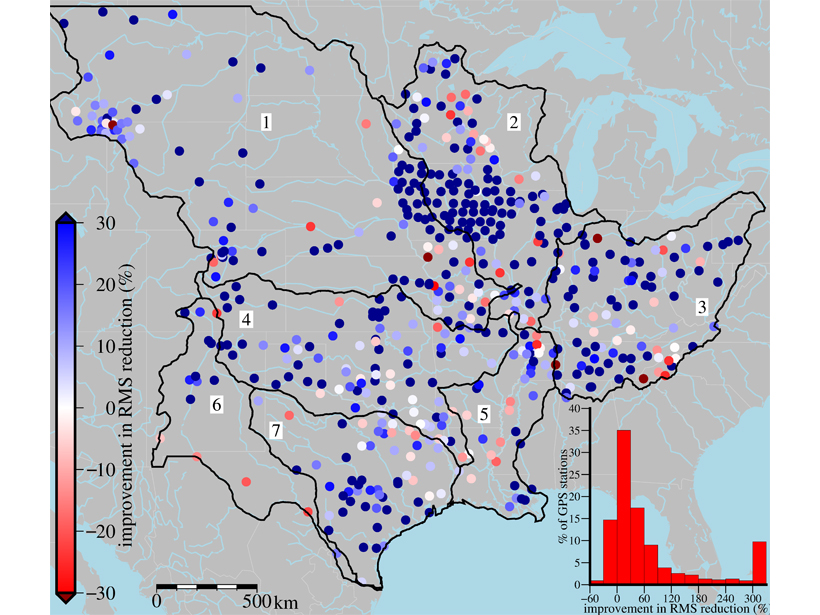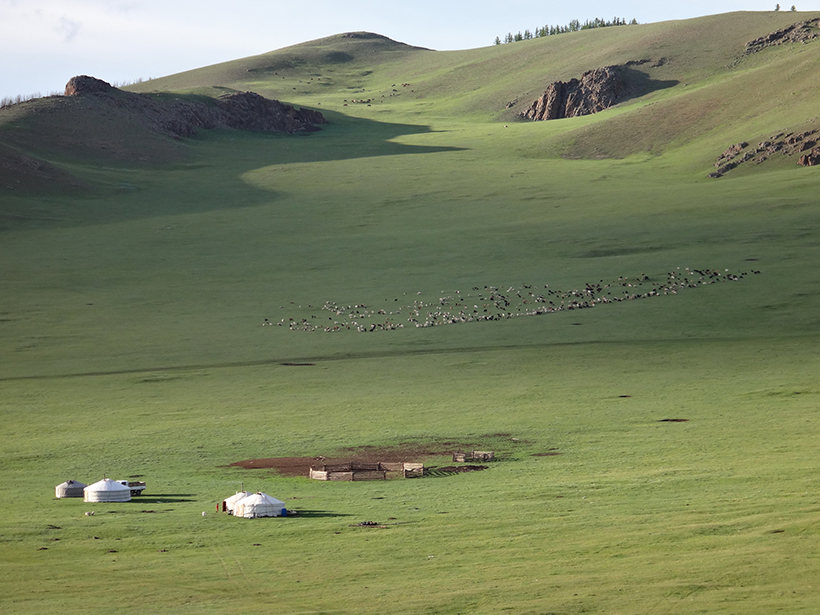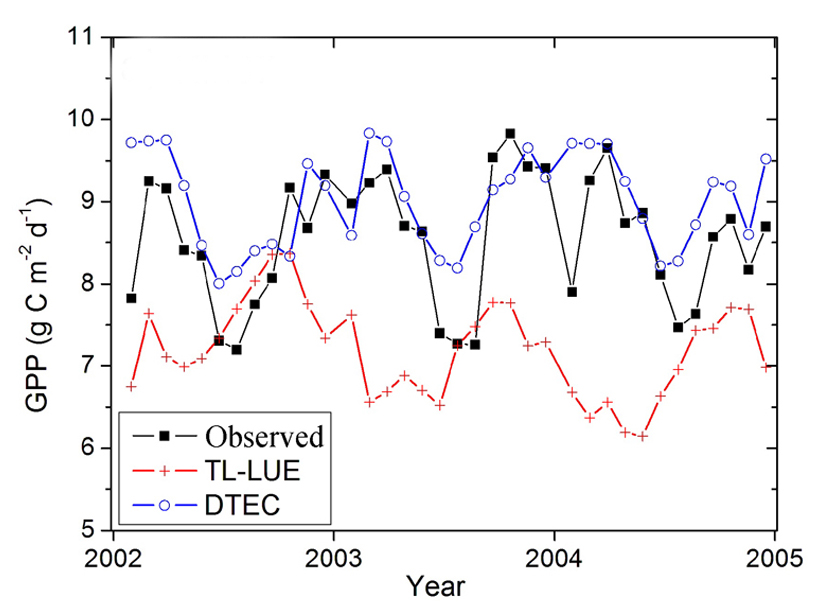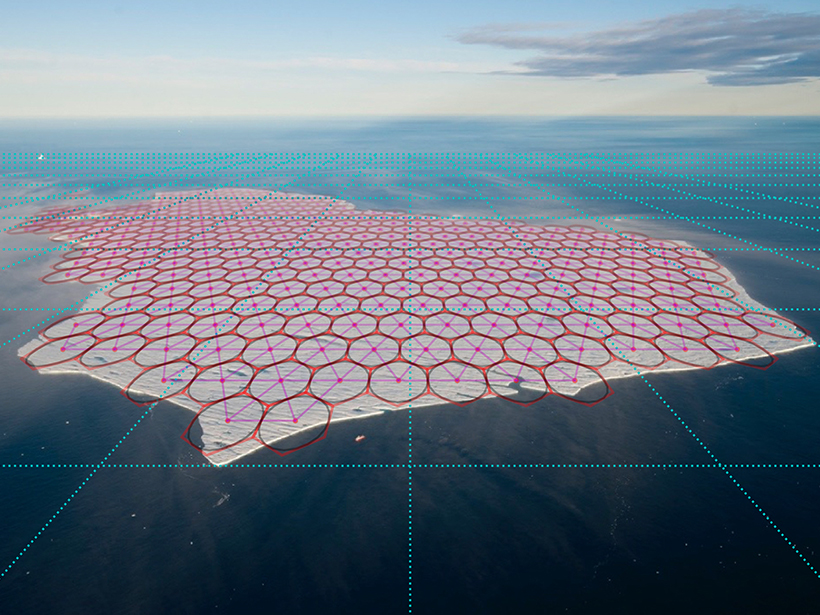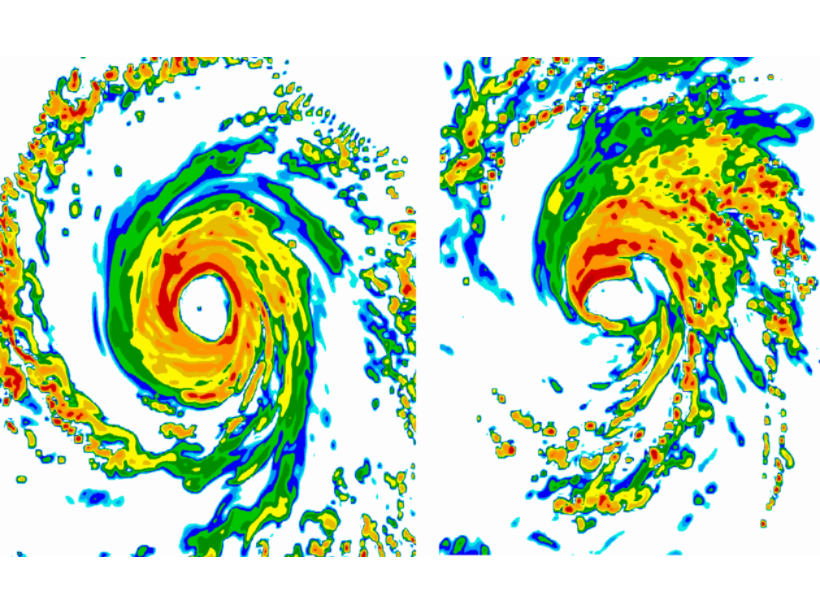An evolving set of tools helps land surface model developers optimize the realism of their parameterizations for the next generation of weather and climate models.
Journal of Advances in Modeling Earth Systems (JAMES)
Bulging, Shrinking, and Deformation of Land by Hydrologic Loading
The deformation of continents by groundwater can be measured locally by GPS or detected from satellites, but more precisely monitored when measurements are combined with a hydrologic model.
A Powerful New Tool to Analyze and Calibrate Earth System Models
Polynomial chaos and Bayesian compressive sensing are applied to a land surface model to understand how large numbers of tunable parameters interact and may be optimized.
Critical Role of Grazing Animals in an Ecosystem
Scientists model the effect of horses, cattle, sheep, and goats on local environments and global climate.
Wet Soils Elevate Nighttime Temperatures
Soil moisture can elevate overnight temperatures, offsetting daytime cooling, especially over areas of strong land-atmosphere interactions.
Improved Simulation of Gross Primary Productivity
A new model better explains seasonal variations in biomass.
How Do Clouds React to Regional Warming?
Researchers illuminate how and why cloud feedbacks depend on spatial patterns of global warming.
Open-Source Tool Aims to Boost Confidence in Ice Sheet Models
The software could help strengthen ice sheet models to provide a better basis for policy decisions.
How to Find an Iceberg’s Breaking Point
Researchers develop a mathematical method of modeling tabular icebergs, like the one that broke away from an Antarctic ice shelf earlier this year.
How Shifting Winds Turn Tropical Storms into Hurricanes
Researchers present a novel method for analyzing how wind shear affects tropical cyclone strength and structure.


